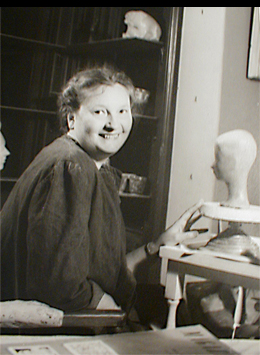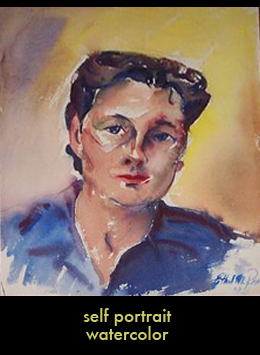

BIOGRAPHY
Ethel Pearce Nerger was a prominent West Coast abstract impressionist, active during the 1940's and 50's in San Francisco art circles. Many of the over 200 paintings she produced in her career were sold in that period. The remainder, in private storage for fourteen years, provide the basis of exhibitions.
A member of the San Francisco Women Artists, the California Art Association, and Artists Equity, Nerger exhibited in the annual shows of the Women Artists, the San Francisco Museum of Art , and the California Palace of the Legion of Honor. In 1949, her paintings were among those of such respected contemporaries as Pollock, Hopper, Motherwell, Ad Reinhardt, and Clifford Still.
She also held one-woman shows at the California Palace of the Legion of Honor, the Oakland Museum, the Santa Barbara Museum, and Raymond and Raymond, San Francisco. Her work was also shown in the opening exhibit of the Richmond Art Center, and, most notably, in the 1950 New York Metropolitan Museum exhibition, "American Art Today."
Nerger began painting in 1936 and from then on, she once said, "I had no other goal." In 1947, she worked in ceramics with Carlton Ball and in design with Marian Hartwell and Stanley Hayter. It was through Hayter's instruction that, she said, "I attained my release to paint my own way, which I have continued to do since 1947. My experimenting has led me to what I call my sublinear paintings, many of which are based on my relationship with my children."
Born on February 16, 1901 in Norfolk, West Virginia, Nerger was one of seven children. Her family moved west to a small farming town in Washington state she she was four, and when she was eighteen she left the farm and eventually moved to Los Angeles. There she met her first husband. The couple had two children. In 1932, they moved to San Francisco. The marriage ended ten years later and she remarried..
Though Nerger's farm background ahd family inspired many of her works, her "sublinear" style was at time highly abstract, confusing to some peers and critics while it was likened by others to that of Picasso or Chagall. In 1948, she defined her style and philosophy in a submission to a book on California art by Arthur Miller, Los Angeles Times art critic:
I will attempt to explain why I describe my style as sublinear. It is to me similar to a combination of several mathematical equations. The given area is designed by shapes, either solid or by implied line, with the negative (the sub) bearing a very close relationship to the principal shape. This happens throughout my work almost automatically as lines define forms and planes. I use al mediums, but water color is my more natural way of expression.
In the East there seems to be a controversy over western painting. To me it is amusing. It seems that the only point of difference is that art in the West is less influenced by that of Europe and comes more directly from the painter.
When I walk into a museum with a show like our annual at the San Francisco Museum of Art, which was certainly food for controversy, my reaction is "Let 'er buck boys; she's rearin' and I'm right with you."
In 1957, frustrated by the politics of the Bay Area art world, Nerger withdrew, continuing to sculpt and paint, but exhibiting infrequently and refusing to promote her work. She spent the next ten years as a successful real estate broker and in the 1960's opened her own firm in the San Francisco Mission District. Nerger exhibited for the final time in 1969. Shortly afterward, 1n 1971, she suffered the first of several strokes and never painted again. She died in 1985.
In June of 2009, after twenty years of effort by Ethel's family, two of her oil painings have been accepted for permanent collection by the prestigious Crocker Kingsley Art Museum in Sacramento, California.


